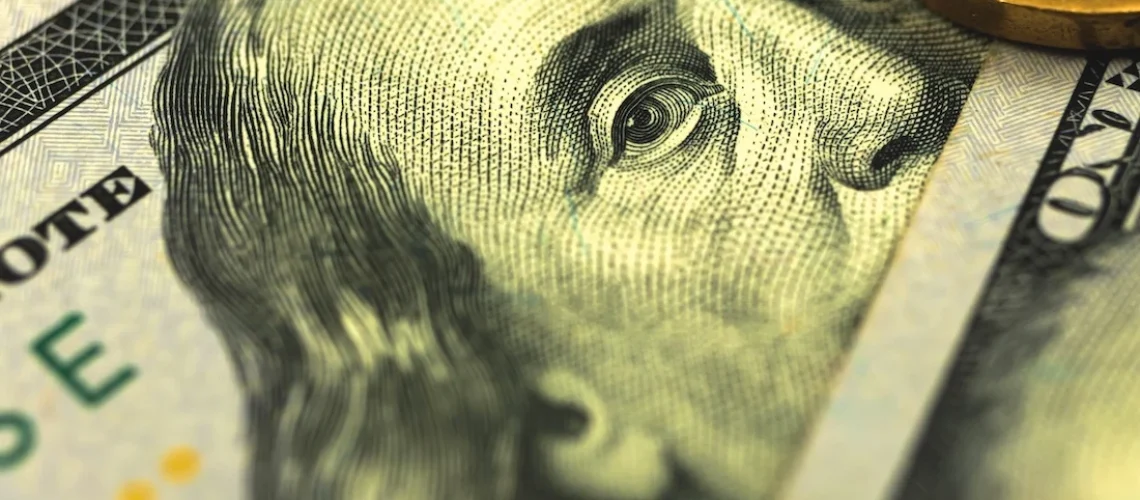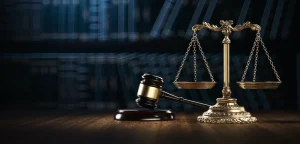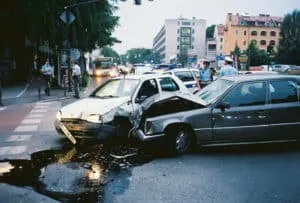What are compensatory and punitive damages?
In legal terms, compensatory and punitive damages are two types of monetary awards that may be granted to a plaintiff in a civil lawsuit. Compensatory damages are intended to compensate the plaintiff for the actual harm or loss suffered, such as medical bills, lost wages, or pain and suffering. These damages are meant to “make the plaintiff whole” by providing financial compensation for the specific losses incurred as a result of the defendant’s actions. On the other hand, punitive damages are intended to punish the defendant for their wrongdoing and deter them from engaging in similar behavior in the future. These damages are awarded in cases where the defendant’s actions were particularly egregious or malicious, and are meant to serve as a deterrent to others. While compensatory damages are meant to reimburse the plaintiff, punitive damages are intended to penalize the defendant for their conduct. Both types of damages are an important part of the civil justice system, allowing individuals to seek redress for their injuries and hold wrongdoers accountable for their actions.
Compensatory vs Punitive Damages
Compensatory damages aim to compensate the victim for economic and non-economic losses incurred as a result of the defendant’s actions. Economic losses may include medical expenses, lost wages, and property damage, while non-economic losses could encompass pain and suffering, emotional distress, and loss of enjoyment of life. For example, if a person is injured in a car accident due to the negligence of another driver, compensatory damages may be awarded to cover medical bills, rehabilitation costs, and emotional trauma.
Punitive damages, on the other hand, are intended to punish the defendant for particularly harmful or negligent behavior and deter similar conduct in the future. Unlike compensatory damages which focus on compensating the victim, punitive damages are meant to hold the defendant accountable and discourage misconduct. In the case of the car accident, if the at-fault driver was intoxicated or engaged in reckless behavior, punitive damages might be awarded to penalize them and discourage others from driving under the influence or recklessly.
In personal injury cases, compensatory damages are commonly awarded to cover the victim’s tangible and intangible losses, while punitive damages are more infrequently granted and typically reserved for cases involving extreme negligence, willful misconduct, or malice.
Compensatory Damages
Compensatory damages, also known as actual damages, are a type of monetary award that a court may order to be paid to a person who has suffered a loss or injury due to the actions of another party. These damages are meant to compensate the injured party for the actual harm they have suffered, including financial losses, medical expenses, property damage, and pain and suffering. In legal terms, compensatory damages are designed to “make the plaintiff whole” by providing them with the financial resources needed to restore them to the position they were in before the injury or loss occurred. This type of damages is commonly awarded in civil lawsuits involving personal injury, breach of contract, or property damage, and is intended to help the injured party recover from the harm caused by another party’s actions.
Medical Expenses
I have incurred several medical expenses for the treatment of my accident injuries. These expenses include bills from physicians, hospitals, and other medical providers, emergency room and ambulance bills, prescription and over-the-counter medications, home health care costs, and other relevant expenses. I have attached receipts and documentation verifying the cost of these medical expenses. Additionally, I have included the amount that would have been paid for health insurance premiums, if applicable. These medical expenses have been a significant financial burden, and I hope that they can be reimbursed to alleviate some of the associated financial strain. Thank you for your attention to this matter.
Property Damage
Property damage is calculated by considering the replacement value of the property and the factor of loss of use.
The replacement value of the property refers to the cost of replacing the damaged item at its current market price. It is important to obtain an accurate estimate of the replacement value to ensure that the full cost of the damage is covered. This may involve obtaining quotes from reputable suppliers or contractors.
The factor of loss of use takes into consideration the amount of time the property will be unusable or inaccessible due to the damage. This can impact the overall value of the claim.
It is crucial to obtain an accurate estimate of the replacement value and provide evidence for any insurance claims or legal action. This may involve documenting the damage through photographs, obtaining professional assessments, and keeping records of any expenses incurred as a result of the damage. Providing accurate and thorough evidence can help to ensure that the full extent of the damage is accounted for in any claims or legal proceedings.
Loss of Consortium
Loss of consortium is a legal concept in personal injury cases that refers to the harm suffered by the spouse of the injured party due to their diminished ability to provide love, companionship, and assistance. It recognizes that a serious injury to one spouse can also have significant effects on the marital relationship, causing emotional and practical losses for the non-injured spouse.
In order to successfully claim loss of consortium, several elements typically need to be proven. Firstly, the existence of a valid marriage between the injured party and their spouse must be established. Additionally, it must be demonstrated that the injury has indeed had a significant impact on the marital relationship, causing a tangible loss of love, companionship, and assistance.
Overall, loss of consortium acknowledges the real and tangible harm experienced by the spouse of an injured party, and allows them to seek compensation for the emotional and practical losses they have suffered as a result of their spouse’s injury.
Loss of Enjoyment of Life
The loss of enjoyment of life can have a significant impact on an individual’s physical and emotional well-being. This can manifest in various ways, including experiencing physical pain, reduced mobility, and diminished quality of life. Emotionally, a person may suffer from increased stress, anxiety, and depression due to the inability to participate in activities they once enjoyed. These types of damages can be included in a personal injury claim, and the severity and permanence of the injury are crucial factors in determining the amount of damages awarded.
The court considers various factors when determining the amount of loss of enjoyment damages, such as the individual’s age, life expectancy, and the impact of the injury on their ability to engage in daily activities. In cases of severe or long-term injuries, the potential significance of these damages becomes even more pronounced, as the individual’s overall well-being and ability to lead a fulfilling life are more significantly compromised. Ultimately, the court aims to provide fair compensation to help alleviate the physical and emotional distress caused by the loss of enjoyment of life.
Mental Anguish and Physical Pain
The mental anguish and physical pain that can result from a motorcycle accident can be overwhelming for the victim. The psychological trauma of being involved in a traumatic event can lead to anxiety, depression, and post-traumatic stress disorder, which can significantly impact the individual’s quality of life. Additionally, physical injuries such as broken bones, head injuries, spinal cord injuries, and road rash can cause intense pain and discomfort, making it difficult for the victim to carry out daily activities. In California, common types of injuries resulting from motorcycle accidents include traumatic brain injuries, spinal cord injuries, limb amputations, and extensive soft tissue damage.
The long-term effects of these injuries can be debilitating, leading to chronic pain, disability, and limited mobility. Treatment options for these injuries may include surgeries, physical therapy, counseling, and pain management techniques. However, the recovery process may be lengthy and challenging, and some individuals may never fully regain their pre-accident level of functioning. Seeking the appropriate medical and psychological care is crucial for the victim’s physical and emotional well-being after a motorcycle accident.
Future Earnings and Earning Capacity
The individual’s future earnings and earning capacity are directly influenced by their education level, work experience, and industry trends. Higher levels of education, such as advanced degrees or specialized certifications, can significantly increase earning potential, as they demonstrate a higher level of expertise and skills. Additionally, accumulating work experience in a specific industry can lead to higher wages, as employers value hands-on experience and practical knowledge. However, industry trends can also impact earning potential, as certain sectors may become more or less profitable over time. To stay competitive and increase future earnings, individuals may need to adapt to these changing trends by pursuing additional certifications or transitioning to high-demand fields. Factors such as technological advancements, economic conditions, and global market shifts can also contribute to an increase or decrease in earning potential. Ultimately, the combination of education level, work experience, and industry trends all play crucial roles in determining an individual’s future earnings and earning capacity.
Special Damages (Pocket Expenses)
Special damages, also known as out-of-pocket expenses, encompass a wide range of costs that can be included in a personal injury lawsuit. This section may include expenses such as travel to medical appointments, as well as the costs for household tasks that the injured party is unable to perform due to their injuries. To effectively include these expenses in the lawsuit, it is crucial to provide evidence and documentation, such as receipts and invoices, to prove the value of the expenses in court. For travel costs, keeping records of mileage and parking fees can help substantiate the expenses. Additionally, maintaining a thorough log of household tasks that have had to be outsourced due to the injuries will be beneficial in proving the impact on daily life and the associated costs. By diligently documenting these out-of-pocket expenses, the injured party can ensure that they are adequately compensated for the financial burden caused by the injuries.
Actual Damages
Actual compensatory damages refer to the monetary award given to a plaintiff to compensate for the actual expenses and losses incurred as a result of the defendant’s actions. This category covers various types of expenses and losses, including medical expenses, property damage, lost earnings, and pain and suffering. Unlike punitive damages, which are meant to punish the defendant for their actions, actual compensatory damages aim to make the plaintiff whole again by reimbursing them for the specific losses they have suffered.
There are two types of compensatory damages: general damages and special damages. General damages, also known as non-economic damages, compensate for intangible losses such as pain and suffering, emotional distress, and loss of companionship. Special damages, on the other hand, are economic losses that can be quantified, such as medical expenses, property damage, and lost wages.
For example, in a personal injury case, a plaintiff may be awarded actual compensatory damages for medical expenses, lost earnings, and pain and suffering. In contrast, punitive damages may be awarded in cases of egregious misconduct or willful negligence, such as in a product liability lawsuit where a company knowingly releases a dangerous product.
Compensatory Damages for Non-Economic Losses
Non-economic damages in a personal injury claim refer to the intangible losses suffered by the injured party, such as pain and suffering, emotional distress, loss of enjoyment of life, and loss of consortium. These damages are difficult to quantify since they do not come with a fixed monetary value. One method used to calculate non-economic damages is the multiplier method, which involves multiplying the economic damages (such as medical expenses and lost income) by a certain factor to determine the value of non-economic damages. Factors to consider when determining the value of non-economic damages include the severity of the injury, the impact on the individual’s daily life, the duration of the recovery, and the long-term effects of the injury.
The types of non-economic damages that may be included in a claim are diverse and subjective in nature, as they depend on the individual circumstances of the injured party. The factfinder, typically the judge or jury, has wide discretion in determining the appropriate amount of non-economic damages, taking into account the evidence presented and the impact of the injuries on the plaintiff’s life. It is important to note that non-economic damages are highly subjective and can vary greatly from case to case.
Non-Compensatory Damages in a Personal Injury Case
Non-compensatory damages, also known as punitive damages, are a type of award that can be given in a personal injury case. Unlike compensatory damages, which aim to compensate the injured party for their losses, non-compensatory damages are intended to punish the defendant for their egregious behavior and deter them and others from similar actions in the future.
In order for punitive damages to be awarded, certain criteria must be met. The defendant’s actions must have involved malice, oppression, or fraud, meaning that they either acted with the intent to harm the plaintiff, engaged in particularly harmful or reckless behavior, or intentionally misled or deceived the plaintiff. The purpose of punitive damages is to hold the defendant accountable for their wrongful actions and send a message that such behavior will not be tolerated.
Compensatory damages, on the other hand, are designed to address the specific losses suffered by the injured party, such as medical expenses, lost wages, and pain and suffering. Unlike punitive damages, compensatory damages are meant to provide a measure of relief and compensation to the plaintiff for their losses.
In conclusion, non-compensatory damages, or punitive damages, serve a different purpose than compensatory damages in a personal injury case. While compensatory damages aim to compensate the injured party for their losses, punitive damages are intended to punish the defendant for their wrongful actions and deter similar behavior in the future.
Punitive Damages
Punitive damages are a form of compensation awarded to a plaintiff in a civil lawsuit in addition to compensatory damages. Punitive damages are designed to punish the defendant for their wrongful actions, as well as to deter similar conduct in the future. These damages are typically awarded in cases where the defendant’s behavior is characterized by fraud, malice, or gross negligence. Unlike compensatory damages, which aim to compensate the plaintiff for their losses, punitive damages are meant to send a message to the defendant and others in similar positions that such behavior will not be tolerated. The purpose of punitive damages is to hold the defendant accountable for their actions and to discourage them and others from engaging in similar conduct in the future. In many cases, the amount of punitive damages awarded is determined by the nature of the defendant’s conduct and their ability to pay.
Exemplary or Vindictive Damages
Exemplary or vindictive damages are a form of monetary compensation awarded in a lawsuit to punish the defendant for their wrongful conduct and to deter similar behavior in the future. These damages differ from compensatory damages, which are intended to compensate the plaintiff for their losses, and punitive damages, which are meant to punish the defendant.
Exemplary damages are typically awarded in cases where the defendant’s conduct was particularly egregious, reckless, or intentional. Examples of situations where exemplary damages may be awarded include cases of fraud, defamation, or malicious misconduct.
When considering whether to award exemplary damages, a court may take into account factors such as the degree of the defendant’s misconduct, their level of awareness of the harm caused, and the need to deter similar conduct in the future.
Overall, the purpose of exemplary damages is to hold wrongdoers accountable and discourage future misconduct. By imposing financial penalties on defendants for their wrongful behavior, exemplary damages aim to promote justice and fairness in the legal system.
Intentional Harm
Intentional harm in personal injury cases refers to the deliberate act or behavior that causes harm to another person. This type of harm is different from accidents or negligence, as it involves an individual purposefully causing harm or acting with conscious disregard for the safety of others. In personal injury cases, intentional harm may lead to the awarding of punitive damages, which are intended to punish the wrongdoer and deter similar conduct in the future.
In California, to prove intentional harm and be awarded punitive damages, specific criteria and evidence must be presented. Under California Civil Code 3294, plaintiffs must show clear and convincing evidence that the defendant acted with malice, oppression, or fraud. Malice refers to the intentional disregard for the rights or safety of others, while oppression involves conduct that subjects another person to cruel and unjust hardship. Fraud entails intentional misrepresentation or deceitful actions.
In conclusion, intentional harm in personal injury cases involves deliberate actions that cause harm to others, and proving such harm in California requires demonstrating malice, oppression, or fraud. These wrongful acts may result in the collection of punitive damages, aimed at punishing the wrongdoer and preventing similar conduct in the future.
How a Personal Injury Lawyer in Los Angeles can Help
A Personal Injury Lawyer in Los Angeles can help individuals who have been injured due to someone else’s negligence by providing legal guidance and representation. They can assist in filing a personal injury claim, which is essential in seeking compensation for damages such as medical expenses, lost wages, and pain and suffering.
Personal injury lawyers have the knowledge and experience to navigate the complexities of the legal system, ensuring that their clients’ rights are protected and that they receive the maximum compensation they are entitled to. They can gather evidence, negotiate with insurance companies, and advocate for their clients in court if necessary.
By partnering with a personal injury lawyer in Los Angeles, individuals can have peace of mind knowing that they have a dedicated legal professional fighting for their best interests. Whether the injury was the result of a car accident, slip and fall, or another type of incident, a personal injury lawyer can provide the critical support needed during a challenging time.
Caps on Damages in California Personal Injury Cases
In California personal injury cases, damages that can be awarded include compensatory, non-economic, and punitive damages.
Compensatory damages are meant to compensate the injured party for their economic losses, such as medical expenses and lost wages. Non-economic damages cover intangible losses like pain and suffering, emotional distress, and loss of enjoyment of life. Punitive damages, on the other hand, are awarded as a form of punishment for the at-fault party’s egregious behavior.
There are exceptions and caps on damages in California personal injury cases. For example, in medical malpractice cases, there are limits on non-economic damages, which are adjusted annually for inflation. The Medical Injury Compensation Reform Act (MICRA) places a $250,000 cap on non-economic damages in medical malpractice cases. Additionally, there are caps on punitive damages, which generally cannot exceed the amount of compensatory damages.
Key factors and considerations for determining the types and amounts of damages awarded in personal injury cases include the severity of the injury, the impact on the victim’s life, and the level of negligence or misconduct of the at-fault party. These factors help determine the appropriate compensation for the injured party.
Schedule a Free Consultation With a Los Angeles Personal Injury Lawyer to Discuss the Damages Available in Your Case
If you have been injured in a personal injury accident in Los Angeles, it is important to seek legal guidance to understand the types of damages available to you. Schedule a free consultation with a Los Angeles personal injury lawyer at Phoong Law by calling 866-GOT-PAIN or submitting an online contact form. During this consultation, you can describe your case and injuries to the attorney and receive a comprehensive case evaluation. The attorney will discuss the types of damages available in Los Angeles personal injury cases, including medical expenses, lost wages, pain and suffering, and more. Understanding the potential compensation that may be available to you can help you make informed decisions about your next steps. Don’t hesitate to reach out to Phoong Law for a free consultation to discuss the damages available in your personal injury case and to get the legal guidance and support you need.
























